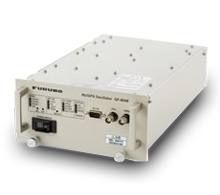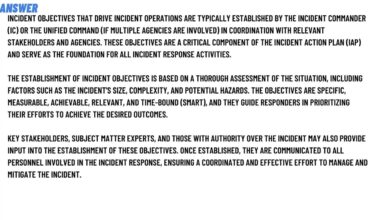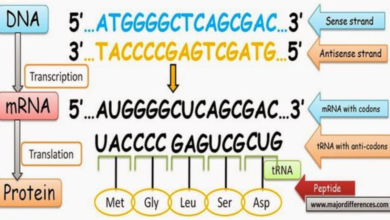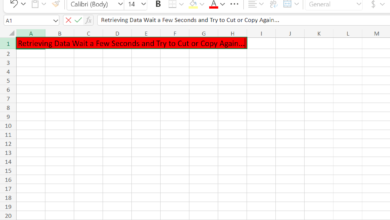Feruno Gpsdo Not Connect to Gnss : Troubleshooting Guide

Feruno GPSDO may not connect to GNSS due to software or hardware issues. For example, outdated firmware or improper cabling can cause this problem.
Many users experience frustration when their Feruno GPSDO fails to connect to GNSS. The Global Navigation Satellite System (GNSS) is critical for accurate positioning and timing, so any connection issues need to be resolved promptly. We will discuss the common causes of GPSDO not connecting to GNSS and provide troubleshooting tips to help you resolve this issue.
By understanding the potential reasons for the disconnect and following our guidance, you can ensure your Feruno GPSDO is functioning properly and delivering reliable performance. Let’s dive into the details to address this frustrating problem and get your GNSS connection up and running smoothly once again.
Contents
Common Issues
When using a Feruno GPS Disciplined Oscillator (GPSDO), you may encounter common issues that prevent it from connecting to the Global Navigation Satellite Systems (GNSS). These problems can be frustrating, but with a little troubleshooting, you can quickly get your device up and running. In this section, we will discuss the most commonly encountered issues and how to address them.
Power Supply Problem
If your Feruno GPSDO fails to establish a connection to GNSS, one possible culprit could be a power supply problem. Insufficient power can hinder the proper functioning of the device and prevent it from acquiring a satellite signal. To address this issue, follow these steps:
- Check the power source and ensure that it is providing the correct voltage and current.
- Verify that the power cables are securely connected, without any loose or frayed wires.
- If possible, try using a different power supply or wall outlet to eliminate the possibility of a faulty power source.
- Consider using a surge protector or uninterruptible power supply (UPS) to prevent electrical fluctuations from affecting your Feruno GPSDO.
By ensuring a stable and sufficient power supply, you can increase the chances of a successful connection to GNSS.
Antenna Connection Issue
Another common issue that can prevent your Feruno GPSDO from connecting to GNSS is an antenna connection problem. A weak or faulty connection can lead to a poor signal reception and result in an unreliable GPS lock. To troubleshoot this issue, consider the following steps:
- Inspect the antenna cable for any visible damage, such as cuts or kinks.
- Ensure that the antenna connectors are securely attached to both the GPSDO and the antenna itself.
- Check if there are any obstructions, such as buildings or trees, blocking the line of sight between the antenna and the satellites.
- If possible, try repositioning the antenna in an area with better visibility to the sky.
Fixing antenna connection issues can significantly improve GNSS reception and enhance the performance of your Feruno GPSDO.

Troubleshooting Steps
If your Feruno GPSDO is not connecting to GNSS, there are a few troubleshooting steps you can take to address the issue. Below, we’ll outline the essential measures to help you solve the problem and get your GPSDO back up and running smoothly.
Check Power Supply
Ensure that the power supply to your Feruno GPSDO is stable and functioning correctly. Check for any loose connections and verify that the power source is delivering the required voltage. Faulty power supply can often cause connectivity issues.
Inspect Antenna Connection
Examine the antenna connection of your Feruno GPSDO to ensure it is securely attached and free from any damage. A loose or damaged antenna connection can lead to connectivity problems with the GNSS signal.
Update Firmware
Regularly updating the firmware of your Feruno GPSDO is essential for optimizing its performance and resolving potential connectivity issues. Visit the manufacturer’s website to download the latest firmware and follow the instructions for updating your device properly.
Software Settings
When it comes to ensuring your Feruno GPSDO connects to GNSS, the software settings play a crucial role. Proper configuration of the software settings is essential for the device to establish a connection with GNSS satellites. Let’s delve into the key software settings that need attention.
Gnss Protocol Selection
Selecting the appropriate GNSS protocol is fundamental to establishing a successful connection. The GPSDO’s software should allow users to choose from various GNSS protocols, such as GPS, GLONASS, Galileo, and BeiDou. Each protocol has its advantages, and selecting the one best suited to your location and application is crucial. Make sure to check the product manual or consult with the manufacturer for the recommended protocol selection based on your requirements.
Baud Rate Configuration
Configuring the baud rate is also a critical software setting. The baud rate defines the data transmission speed between the GPSDO and the GNSS receiver. It’s important to ensure that the baud rate settings on your GPSDO match those of the connected GNSS receiver. This ensures smooth communication and prevents connection issues. Double-check and adjust the baud rate configuration as per the specifications provided by the GNSS receiver’s manufacturer.
Credit: www.eevblog.com
Advanced Solutions
When it comes to troubleshooting issues with your Feruno GPSDO not connecting to GNSS, there are some advanced solutions you can try. These solutions go beyond the basic troubleshooting steps and are specifically designed to tackle more complex problems. Let’s explore two key areas: signal interference and antenna placement.
Signal Interference
In order for your Feruno GPSDO to connect to GNSS satellites effectively, it is important to minimize any potential signal interference. Signal interference can disrupt the reliable reception of signals, causing GPSDO connection issues. Here are some steps you can take to address signal interference:
- Move away from any electronic devices that could be causing interference, such as smartphones, radios, or Wi-Fi routers.
- If you suspect that nearby buildings or structures might be obstructing the GPS signals, try relocating your GPSDO to a higher position with a clearer line of sight to the sky.
- Check if there are any sources of electromagnetic interference nearby, such as power lines or industrial equipment. If so, consider moving your GPSDO away from these sources.
- Ensure that your GPS antenna cable is properly shielded and grounded to minimize the risk of interference.
Antenna Placement
The placement of your GPS antenna plays a crucial role in the reliable connectivity of your Feruno GPSDO to GNSS satellites. Here are some tips to ensure optimal antenna placement:
- Position the antenna in an area with a clear view of the sky and minimal obstructions, such as tall buildings or trees.
- Mount the antenna as high as possible to improve its visibility to the satellites. Rooftops or outdoor locations often provide better reception than indoor placements.
- Avoid placing the antenna near metal obstructions or objects that can reflect or block the GPS signals.
- Ensure that the antenna is securely mounted and aligned properly, following the manufacturer’s instructions.
By implementing these advanced solutions, you can increase the chances of resolving the Feruno GPSDO connection issues. However, if you have tried these solutions and are still experiencing problems, it may be necessary to seek professional assistance or contact the Feruno support team for further guidance.
Contact Support
To resolve issues with Feruno GPSDO not connecting to GNSS, it’s crucial to reach out to the support team for assistance.
Manufacturer’s Customer Service
For prompt help, contacting Feruno’s dedicated customer service team is key. They can provide specific guidance on troubleshooting the connectivity problem.
Technical Support Forum
Another avenue for assistance is the technical support forum on Feruno’s website. Here, you can find solutions shared by other users facing similar issues.

Conclusion
To summarize, connecting a Feruno Gpsdo to GNSS can pose challenges, but with the right troubleshooting steps, it can be resolved. By ensuring the correct wiring, updating firmware, and verifying the antenna setup, users can overcome connectivity issues. Following these troubleshooting tips will help achieve accurate GPS synchronization and enhance overall performance.
With these solutions, users can make the most of their Feruno Gpsdo and achieve reliable GNSS connectivity.




